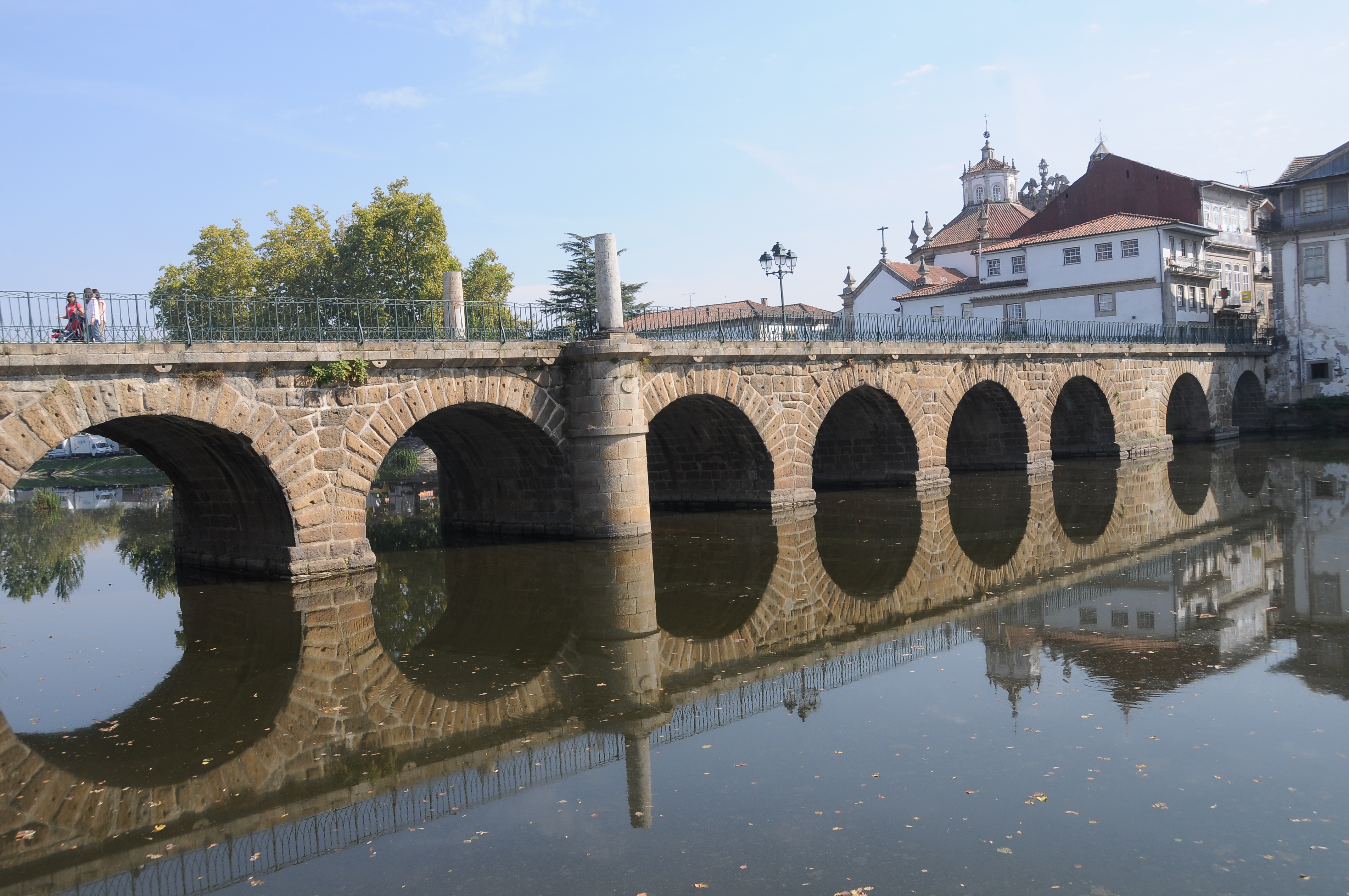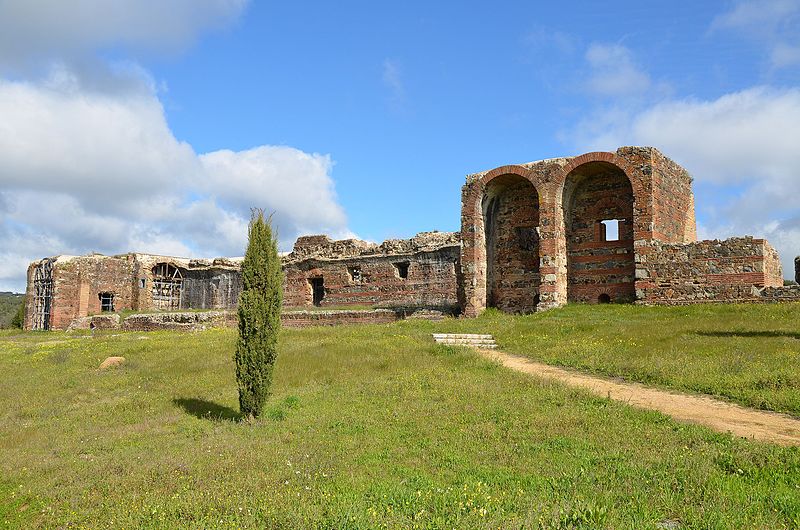Portugal is home to a number of significant Roman ruins. Numerous museums around the country also have Roman coins, pottery, and mosaics. The majority of visitors to Portugal, not only those interested in history, will be delighted by what they discover.
Conimbriga (Ruínas de Conímbriga)
Conimbriga was originally populated towards the end of the second millennium BC, during the Bronze and Iron Age periods, and continued to be inhabited during the Roman period, when Portugal was known as Lusitania.
Although only around 20% of the whole historical, urban area has been explored, the ruins provide an enthralling glimpse into life and culture during the Roman conquest of Portugal.
There are mosaics, walls, baths, and a great museums to visit, the Museu Monográfico de Conímbriga.
Roman Bridge in Chaves

 The city of Chaves (Aquae Flaviae) in northern Portugal’s Trás-os-Montes area is home to the magnificent Ponte Trajano (Trajan Bridge).
The city of Chaves (Aquae Flaviae) in northern Portugal’s Trás-os-Montes area is home to the magnificent Ponte Trajano (Trajan Bridge).
The 140-metre-long bridge dates from the early second century AD, during the reign of Emperor Trajan. The bridge, which is now pedestrianised, is Portugal’s best Roman structure. It was a section of the Roman route that connected Braga with Astorga in Spain.
On the bridge, two Roman-era columns with inscriptions stand. The first column, dubbed the Padro dos Povos (People’s Standard), originates from 79 AD and is dedicated to Vespasian and Titus, among other notables. The second column bears a shorter inscription indicating that the bridge was constructed by locals and dedicated to Trajan.
Similarly, Tavira in the Algarve contains a smaller bridge (the Ponte Romana) with seven arches, including some that date all the way back to the Roman era.

Teatro Romano, Lisbon
The Romans referred to Lisbon as Olisipo. Unfortunately, in comparison to other sites, not much remains of the old Roman city. However, the remains of the Teatro Romano, as well as an amazing contemporary museum, may still be viewed.
During Emperor Augustus’ reign, the Teatro Romano was established in the early first century AD. During the reign of Emperor Nero, it was rebuilt in 57 AD by Caius Heius Primus. The theatre, which had a seating capacity of roughly 4,000 people, served as a symbol of Roman supremacy.
From the street outside the main museum building, a portion of the orchestra, the proscenium (stage) wall, and the sitting portions can still be seen. A painted background depicts the theatre in its heyday.
Following the disastrous 1755 Lisbon earthquake, the Teatro Romano remained buried until renovation began in 1798. The structure’s ruins were discovered during the rebuilding of Lisbon after the tragedy.
The museum’s contemporary interior depicts Roman Lisbon through archaeological findings like stone columns, steles and sculptures, pottery, and glassware.
The neighbouring Casa dos Bicos has Roman foundations exposed through a glass floor.

Evora
Evora was known as Liberalitis Julia under the Romans. The magnificent Templo Romano is the city’s major Roman monument.
Experts believe the temple, Portugal’s best intact Roman-era structure, dates from the first century, with extensions in the second and third centuries.
Nobody knows for certain who the temple was built in honour of; while it is commonly referred to mistakenly as a temple to Diana, the goddess of hunting, it might possibly have been built in honour of Augustus or perhaps Julius Caesar.
Fourteen Corinthian columns remain, some capped with Estremoz marble and placed on top of a granite platform. At night, the ruin is illuminated.
In the Middle Ages, the temple was utilised as a butcher and is unusually well maintained.
Other Roman relics unearthed in the UNESCO World Heritage Site city include the Termas Romanas (Roman baths) excavated beneath the Câmara Municipal (town hall).

Ruinas De Milreu, Faro
The tiny village of Estói, approximately 10 kilometres north of Faro in the Algarve, is home to the Ruinas de Milreu, a series of 1st century AD Roman remains located just off the N2 Highway.
The ruins were discovered in 1877 and are assumed to be the remnants of a Roman villa and bath complex related to the major Roman colony of Ossonoba
(modern-day Faro).

The Ruinas de Milreu contain a number of well-preserved mosaics depicting fish in the bathing area, a nymphaerium or water sanctuary that was later converted into a church by the Visigoths in the 3rd century, and a small museum with interesting panel displays explaining the site’s history and a number of objects discovered on site.
Aside from the friezes, the bathing area has fragments of the changing room (apodyterium), the frigidarium or cold plunge, and evidence of the complex, brick under-floor heating system.
A massive 3rd-century Roman mosaic depicting Oceanus, the deity of the sea, was unearthed near Faro Railway Station and is now at the Municipal Museum of Faro.

Cetobriga Roman Ruins
The Acala Island ruins (also known as the Cetobriga Roman Ruins or the Runas Romanas de Troia) on the Troia Peninsula south of Setubal were formerly the greatest fish salting site in the Roman Empire and were in operation until the 6th century.
From October to March, they are open Tuesday through Sunday from 10 a.m. to 1 p.m. and 2.30 p.m. to 6 p.m. The rest of the year, they are only open for guided tours by archaeologists on Saturdays at 3 p.m. in June and September, and on Wednesdays and Fridays at 10.30 a.m. in July and August.

Miróbriga
The Roman village of Miróbriga in the Alentejo, adjacent to Santiago do Cacém, includes some of the best-preserved Roman ruins in the country. Two bathhouses, perhaps for men and women, temples, residences, shops, a bridge, paved roads, and the remains of a Hippodrome or Roman Circus could all be located.
The most spectacular structure is the Forum, or temple dedicated to the Imperial religion, which still has a few of its original, ornate columns standing.
A contemporary Interpretive Centre has been built to give information about the entire site.

Ammaia
The Roman ruins of Ammaia are located on the route to Portalegre in Alto Alentejo, 7 kilometres south of the hilltop village of Marvão. The Roman town of Ammaia is said to have been built in the first century under the reign of Emperor Claudius. Parts of a Roman wall with a gate and towers, as well as the remnants of a dwelling, public bath, forum, and temple, are still intact.
A modest Visitor Centre/Museum provides more information about this historic location, which was connected by road to Emerita Augusta (modern-day Mérida, Spain). Some of the pottery, glass, and metalwork discovered at the site is on display in the Visitor Center, while others have been sent to the National Museum of Archaeology in Lisbon.

São Cucufate
The ruins of São Cucufate are the remnants of a late Roman villa or farmhouse in the country’s southern Alentejo area. Later in the ninth century, a convent was erected on top of the now-demolished Roman structure. This, too, was eventually dropped. Enormous brick arches and portions of the large structures’ walls are visible. A bronze statue of an emperor, pottery, coins, glass, and metal tools are among the notable discoveries made here. The site is located north of Beja, which is home to the Ruinas Romanas de Pisões. These are the ruins of a big Roman rustic villa.

Braga
Braga, the provincial capital of Gallaecia, was known as Braccara Augusta in Roman times. The city’s Roman heritage may be explored in the Museu Dom Diogo De Sousa, which is more renowned for its Medieval cathedrals, such as the majestic Sé de Braga. Nearby lies the enormous Maximinus Thermae (Termas Romanas de Maximinos), which is presently being excavated.



